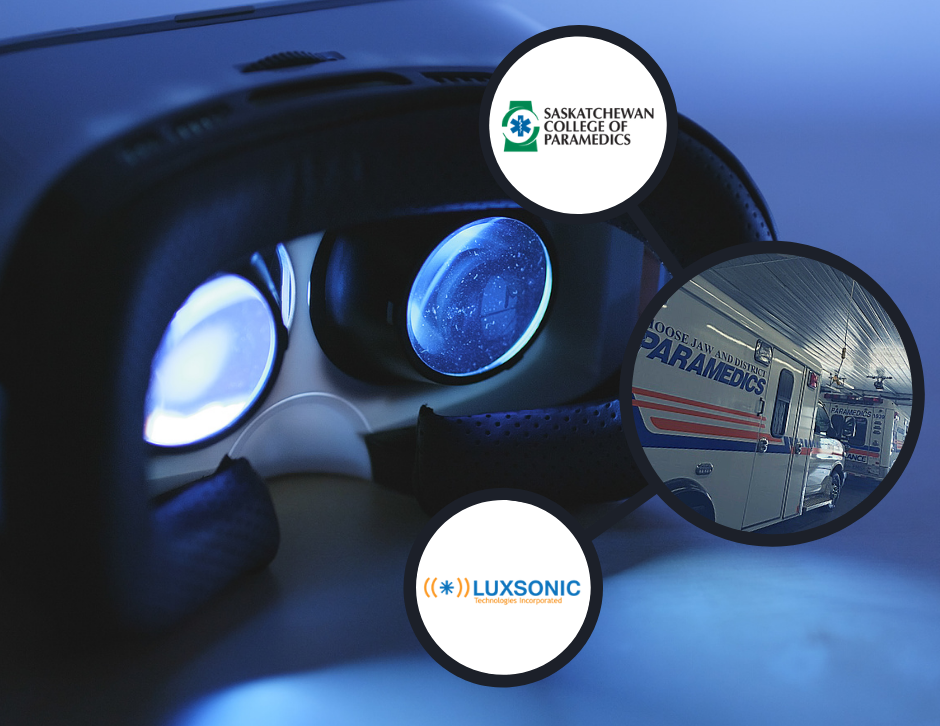Prior to March 2020 Saskatchewan’s 2,000 paramedics rarely needed to gear up with full personal protective equipment (PPE), a practice usually reserved for hospital staff treating patients in isolation. With the onset of the COVID-19 pandemic though, it suddenly became critical that the province’s emergency health professionals receive a refresher on the proper way to don and doff gowns, goggles, masks, and gloves, to ensure they didn’t pick up the virus from patients or risk spreading it to others.
Jacquie Messer-Lepage, registrar of the Saskatchewan College of Paramedics (SCOP) says the pandemic heightened awareness of the risks involved in providing emergency care. “In the beginning, there was a lot of uncertainty as to whether the virus was aerosolized. Pre-COVID, things like doing CPR would not have been considered a high risk aerosol-producing activity,” she said. “Now we know that even something as straightforward as CPR requires a different level of PPE to prevent the spread of COVID-19.”
With the support of a rapid response grant from the Saskatchewan Health Research Foundation (SHRF), the College of Paramedics was able to team up with Saskatoon company Luxsonic Technologies to create a pair of 5-minute “immersive” videos that put viewers in the same room as another paramedic who is walking — and talking — them through all of the steps required for safely putting on and taking off PPE.
Luxsonic CEO Mike Wesolowski says his company’s unique 360 degree video technology transports a viewer wearing a virtual reality (VR) headset directly into the environment where the video was shot. “You experience that space in the same way that you would in real life, so it is a much more impactful experience,” says Wesolowski. “We find that with 360 video there is better knowledge retention and better learning outcomes, because your brain is actually forming similar memories as if you were actually in the space and experiencing it.”
Messer-Lepage agrees the 360 immersive technology does seem to make all of the details in a process just that little bit “stickier.” “You can tell people that they need to make sure to sanitize their hands in between each step (when donning/doffing PPE), but actually seeing the person take the time to do the activity — it triggers something in your own mind,” said Messer-Lepage. “For our practitioners, seeing these videos, being able to kind of be in the middle of it, it becomes an experience, as opposed to an academic lecture. Your brain is working differently.”
The refresher videos were produced quickly and already available on a limited basis by mid-April. Paramedics can watch them in one of three ways: Using a VR headset that has the videos loaded on it, wearing a VR headset and streaming them from the web-based MedCast360 platform developed by Luxsonic, or watching them through MedCast360 but without the VR headset. While the VR headset provides a more immersive experience, viewing the videos online still provides a 360-degree perspective, which is better than normal, two-dimensional video; the user can scan the entire scene and change the perspective they’re viewing the action from. So far, the College of Paramedics has one headset it’s loaning out to ambulance services around the province, and plans to purchase more.
As part of this project, SCOP also worked with Luxsonic to produce an immersive video detailing how to safely test patients using oral and nasal swabs. While it’s not a routine practice for their profession, Messer-Lepage says paramedics may be asked to collect specimens while on an EMS call, if a patient is suspected of having COVID-19. Paramedics have also been lending a hand with specimen collection at the various Saskatchewan Health Authority-run testing sites.
The College has received positive feedback from members about the new videos. Messer-Lepage says SCOP is already partnering with Luxsonic on a new collaboration that will use the same technology to create interactive videos for assessing the competency of people applying for paramedic jobs from out of province or even out of the country.
Original story from Saskatchewan Health Research Foundation (SHRF).

